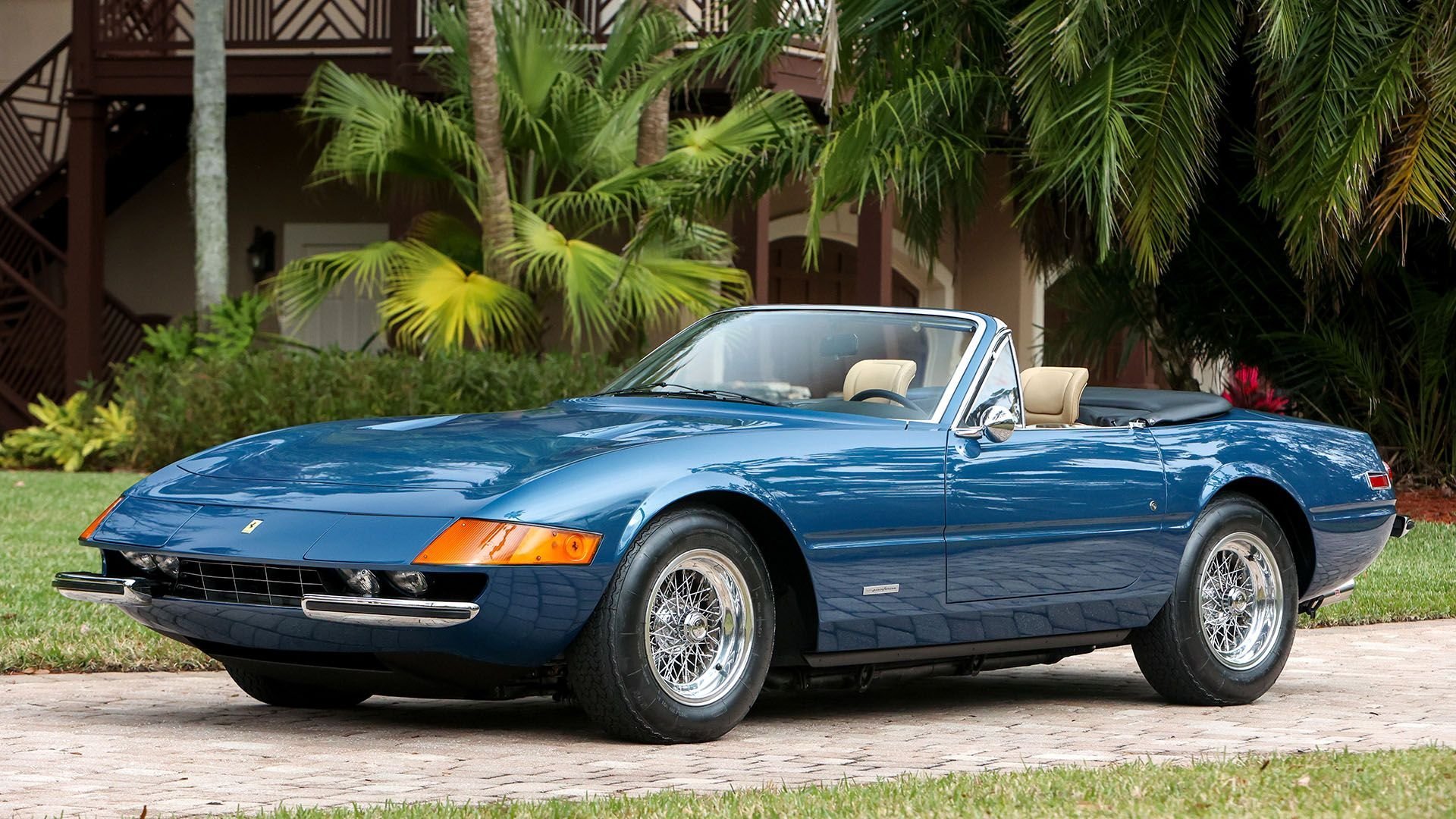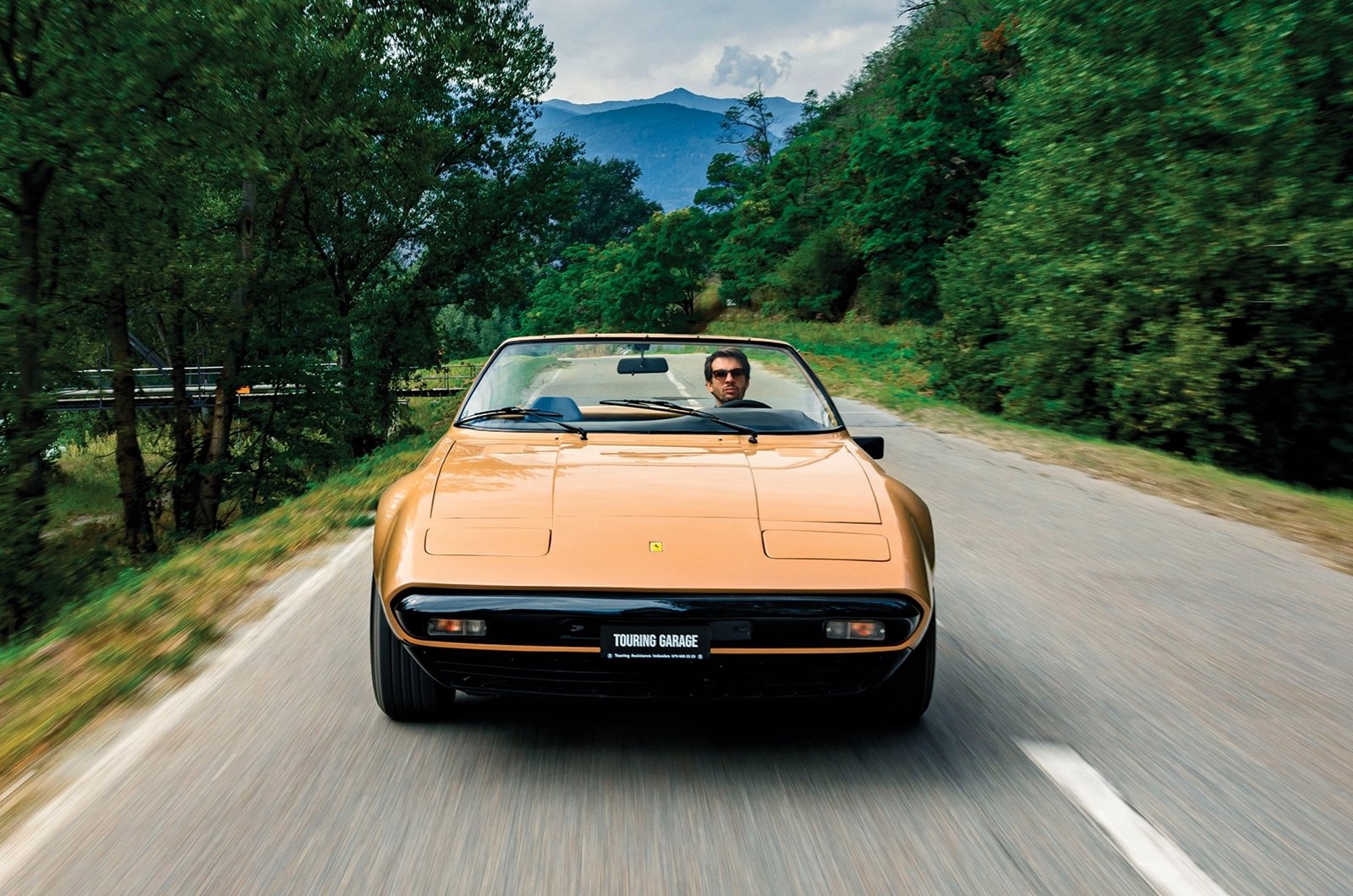Topless Beach
The prancing horse has crafted a legacy of automotive masterpieces that have captured the imagination of the world in a way few brands ever could. Ferrari has produced countless vehicles, each one an exquisite blend of engineering brilliance and raw emotion. From the moment Enzo Ferrari's vision took shape on the racetrack, the brand began to forge an unbreakable connection with racing legends, engineers, and car enthusiasts alike. Iconic models like the Ferrari 250 GTO, 275 GTB Rally car, 365 GTB, 288 GTO, the Ferrari F40, the Dino, and so many more have transcended their roles as mere cars, becoming symbols of aspiration and desire. These are vehicles that inspire envy and admiration in equal measure—whether it's the smooth lines of a classic Berlinetta or the blistering power of a modern hypercar. Children dream of them, engineers study them, and companies aspire to reach the heights of their perfection.
Every Ferrari model, from the track-ready machines to the street-ready roadsters, is nothing short of automotive ecstasy. The sound of a Ferrari engine firing up, that unmistakable scream, is enough to send chills down anyone's spine and some clothes dropping to the floor. And with every shift of the gearbox, every curve of the road, these cars promise not just performance but an experience unlike any other. So, when I say that this Ferrari is the coolest, it's not just an opinion—it's an undeniable truth, at least to me. Because while there are countless Ferraris that could make your heart race, some just feel different and have that Ferrari DNA, but made differently. It's more than a car—it's a dream made real, this dream of a “Beach Ferrari” as it was called was for Sheikh Al Thani, the Emir of Quatar, in the Mid-1970s, he wanted an open-top version of a V12 Ferrari, and I cannot blame him. At the time leisure cars or beach cars were cherished by both celebrities and automotive moguls, quickly became a defining symbol of la dolce vita. Over time, however, they gradually faded from prominence, supplanted by a new wave of vehicles designed purely for recreation, such as the Meyers Manx buggy. Meanwhile, more utilitarian, streamlined models of city cars—like the Mini Moke and Citroën Méhari—helped democratize the category. This new wave of utilitarian vehicles were sign of “fun wealth” but none of them captured the elegance of fun.
It fell to Willy Felber, the Swiss distributor of Ferrari and Rolls-Royce, importer, and boutique manufacturer, to take on the challenge of creating the Beach Ferrari. Felber, who had long harbored dreams of becoming a car manufacturer, was eager to attract the new Gulf billionaires and their seemingly endless petrodollars with a series of bespoke creations. Recognizing a golden opportunity to craft something truly extraordinary, he enlisted master coachbuilder Giovanni Michelotti from Turin—already a trusted collaborator—in early 1976 to transform a Ferrari 365 GTC/4 into the ultimate summer cruiser.




Now, let’s be clear: it would take either a madman or a genius to contemplate redesigning the 365 GTC/4—arguably one of the most iconic and beautifully designed cars in automotive history. But Michelotti was no rookie. With over 1,200 cars to his name, including no fewer than 192 Ferraris—many of them one-offs produced between 1949 and 1953 for Carrozzeria Alfredo Vignale—he was more than equipped for the task. Within three months the car was designed, built, assembled, and finished ready to hit the open road. The end result screamed “Sprezzutera.” The ability of doing something or being something in an effortless way when in reality it is extremely difficult to pull off.
The original vision for the Felber Ferrari Beach Car was nothing short of spectacular: it was to be finished in a shimmering Light Metallic Blu, complemented by a rich blue denim interior. But fate had other plans. The devastating impact of the oil crisis on Qatar forced Sheikh Al Thani to cancel his extravagant order—an eye-watering Sfr 300,000 (approximately the same in dollars) that, back in 1976, would have equated to a staggering $1.6 million. The result? The Beach Car languished without a buyer for the first three months.



But like any true legend, its story didn’t end there. Over the years, the Beach Car changed hands multiple times, capturing the imagination of crowds on the picturesque lakeside boulevards of Switzerland, earning the affectionate nickname ‘Croisette.’ Michelotti, never one to shy away from a bold move, decided to give the car a striking new look in Bronze Metallic and showcased it with flair at the Geneva Motor Show in March 1976—an automotive masterpiece designed to turn heads, stir passions, and create dreams. After watching the Beach Ferrari fail to sell, despite its glowing praise for design, ingenuity, purpose, and class, Felber, utterly baffled, proposed to Michelotti that it be rebodied as a station wagon. The complete opposite of a beach car, there thought was if it was not selling as an impractical car, lets make it practical to appeal to more buyers, possibly one with families. The wagon or shooting brake was metallic brown and had a cream-vinyl-roofed, anything with vinyl is not great, but was exhibited anyway at the 1977 Geneva show, with clumsy lines and a glass tailgate with visible hinges. The Beach Car had fallen far from the tree. When the Shooting Brake failed to find a buyer—shocking, right?—Felber, ever the optimist, decided to restore the Beach Car to its former glory. Thankfully, Michelotti had held onto the original panels, so they were ready to go.
This time, Felber gave it a fresh twist: a crisp white paint job and blue leather replacing the original denim interior. With a new look, it was finally sold in 1978 to Swiss entrepreneur Henri-Ferdinand Lavanchy. By 1988, the car still hadn’t been homologated for road and had a mere 1,002 km (622 miles) on the dial. Lavanchy eventually sold it, and the car passed through several hands before landing with Horst Mülau. In the end, it was granted a Swiss registration certificate on 29 September 1989—finally roadworthy after all those years of being like end piece of a loaf of bread, everyone touches you, but nobody wants you. And just when it seemed the car might have found its groove, Mülau, ever the visionary, proposed to Studio Michelotti swapping it for a one-off special Mondial. But when the full cost of the project was revealed, that idea was promptly scrapped. At least the Beach Ferrari returned to its original bronze hue—proof that sometimes, it takes a few decades to find your true color. In 2023 it was acquired by collector Roger Imboden in southwest Switzerland who has done it justice and let it roam the Swiss countryside.
The design of the Beach Ferrari is a triumph of simplicity and proportion, a masterclass in restraint. Sculpted in golden hues, this masterpiece of automotive design is a rolling ode to elegance, a whisper of speed wrapped in a body that defies convention. Its shape is a fluid dance between aerodynamic precision and artistic expression, a silhouette that flows like liquid metal under the sun. Every line feels deliberate, every curve purposeful—except for the slightly jarring angle of the windshield, which interrupts the otherwise fluid aesthetic. But that’s a small quibble in the face of such a striking creation. The side cutouts, in particular, are mesmerizing—bold, yet elegant—and while it draws on the rugged spirit of dune buggies, there’s no mistaking its Ferrari lineage. The low-slung stance and seamless curvature evoke a sense of movement even in stillness, an invitation to indulge in the poetry of open-air motoring. All while the unmistakable DNA of the brand flows through every detail, even in this wild departure from the norm.
Inside, the dashboard is a harmonious blend of the familiar and the bespoke. The instruments are lifted straight from the donor GTC/4, while the rest of the dashboard is entirely custom, a refined departure from the utilitarian. There are no extraneous controls—no radio, no ventilation knobs—just the column stalks, keeping the driver focused on the essentials. The simplicity of the cabin is profound, but what truly elevates it is the execution: the flawless finish, the precision assembly, and even the gearknob, clad in matching blue leather, exuding an air of understated luxury. The absence of doors, the embrace of a cockpit that seamlessly blends into the bodywork, and the pop-up headlights, they are matched perfectly with the design and era. Every line is intentional, every contour designed to seduce the wind. The deep blue interior, cradled within the golden shell, is an intimate retreat for those who appreciate the rare harmony of luxury and performance.
And then, the experience of driving it—the open-air feeling is simply extraordinary. In a car this wide, this spacious, you’re not just driving; you’re immersed. It’s a visceral sensation, as if the entire world opens up around you. The air, the space, the freedom—it’s intoxicating. Every moment behind the wheel is a reminder of why this car exists: pure, unfiltered joy. Ok, so yes, this is not the fastest, best handling, most powerful, or a game changing Ferrari, but it is the coolest, most fun, not to mention unique. The 4390cc quad-cam Colombo V12 comes to life with a fierce, unbridled energy, its intricate mechanics producing a symphony of power, complexity, and the most harmouns sound you have ever heard. This 340bhp one-off Beach Car Ferrari is an intoxicating, lustful machine, yet remarkably approachable—a masterpiece that invites anyone to take the wheel. Even at a crawl, it feels graceful and effortless. The pedals respond to the gentlest touch, and the wet-sump engine delivers its power with a smooth, docile charm, exuding confidence without a hint of intimidation.
Out on the open road, it’s a revelation. The cockpit, shaped with purpose and elegance, shields you from the turbulence you’d expect in such an exposed design. At a relaxed 60mph, the experience is serene, almost dreamlike—cruising becomes a pleasure, especially under the warmth of a clear, sunlit sky, and the fact that it has no doors only enhances the experience. There’s a purity in its simplicity. The drive feels refined, like a grand tourer perfected, but with the visceral thrill of being utterly immersed in the world around you. The cutaway sides frame the rush of asphalt below, blurring the line between machine and road, driver and journey.This unique creation embodies the soul of a long-distance tourer, wrapped in unconventional, strikingly individual bodywork. Every detail, every nuance, seems crafted for adventure and pure bliss, it is an experience—a golden chariot that turns every road into a stage and every journey into a symphony of exhilaration. The promise of an exhilarating road trip lies in its DNA—just add a clear day, and let the thrill of the open road and your dreams unfold. Told you this was the coolest Ferrari, now only if my local bodega would stop selling me lottery tickets with losing numbers so I could purchase one.
















